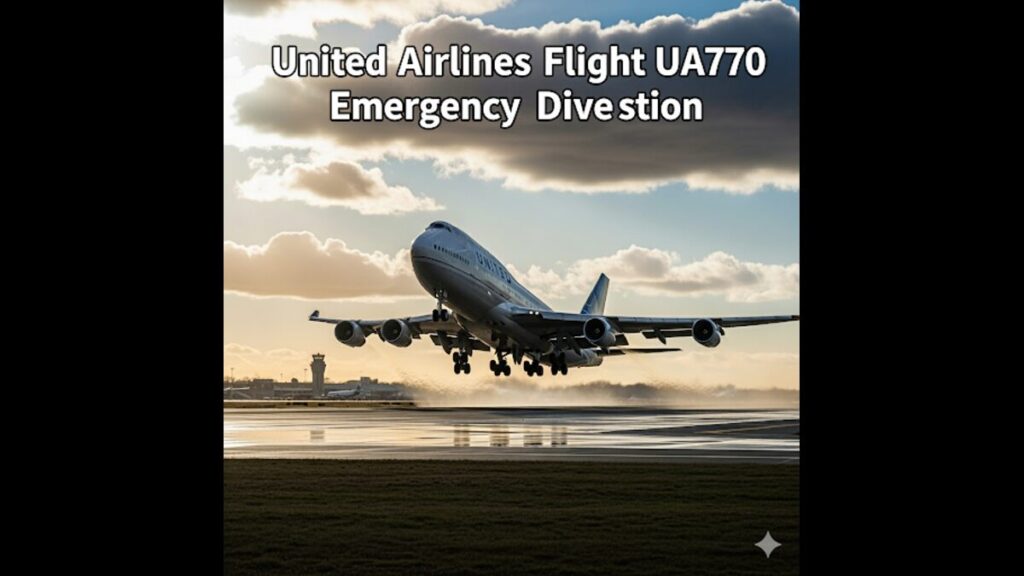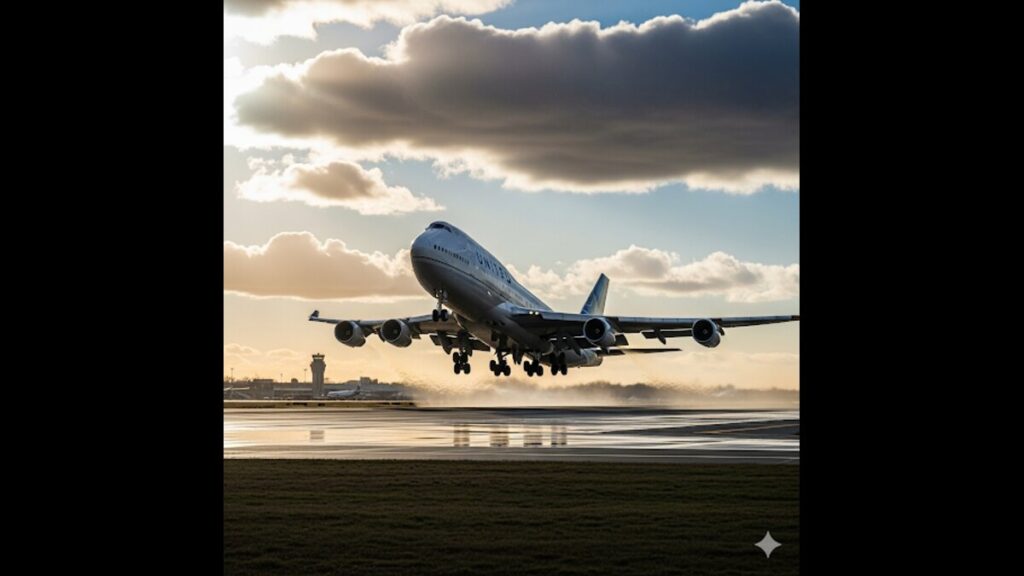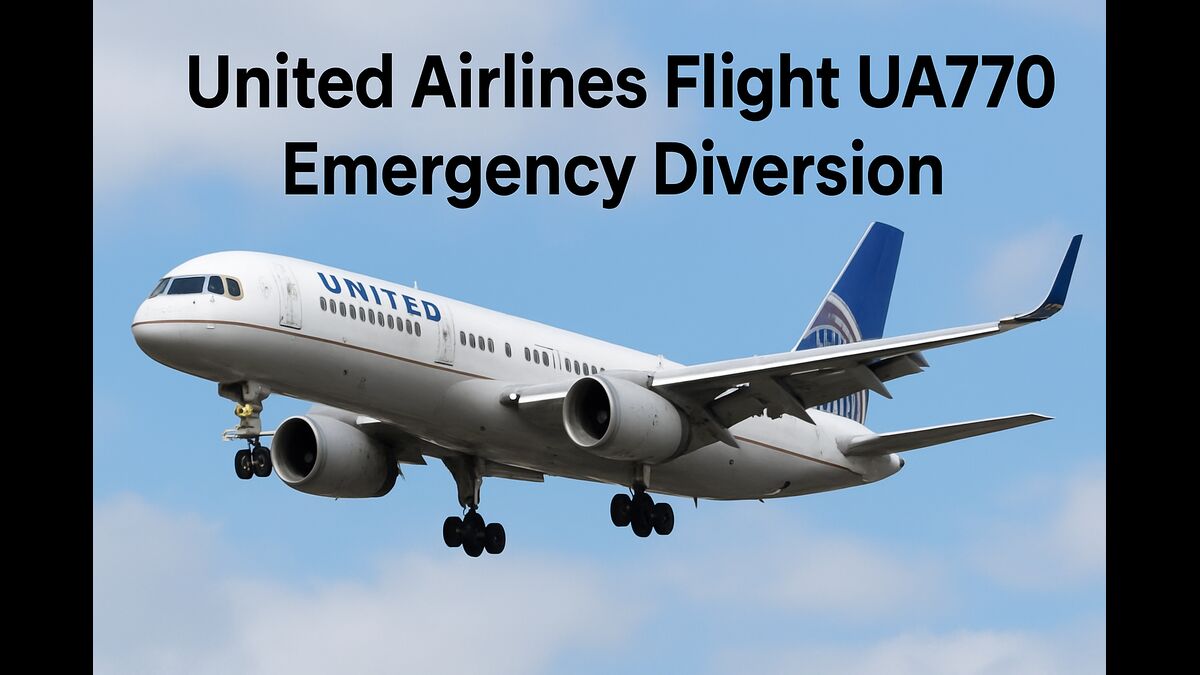Air travel is considered safe but some incidents remind us that even regular flights can face problems. One such case is of United Airlines UA770, which was diverted due to a technical glitch. Although this created a little anxiety among the passengers, it also became an example of how aircraft safety systems and training techniques work together to protect the lives of passengers.
In this article we will know about the United Airlines flight UA770 emergency diversion reasons, crew response, passengers’ reaction, and much more information.
What Is an Emergency Diversion?
An emergency diversion happens when a flight cannot continue to its original destination and lands at another airport. These diversions are generally taken for precaution.
Some common causes include:
- Medical emergencies onboard
- Technical or mechanical alerts
- Bad weather like storms or fog
- Security or passenger disruptions
Understanding this will help in understanding the situation of the emergency diversion of United Airlines flight UA770.

Why Flight UA770 Diverted
Flight UA770’s diversion occurred when the sensors installed in the plane indicated potential technical risk. Modern aircraft are equipped with cutting-edge technology that alert pilots if any issue occurs.
Instead of pushing ahead, the captain made a call to divert the plane to nearby airport and coordinated with Air Traffic Control (ATC). This decision showed that protecting lives always comes before keeping to the timetable.
How the Crew Responded
The crew’s response was calm, professional, and reassuring.
- Captain’s updates: The captain honestly informed the passengers about the situation and told them that this diversion has been taken for their safety.
- Coordination with ATC: The cockpit crew stayed in touch with ATC for alternate routing and safe landing clearance.
- Cabin crew support: Flight attendants kept the cabin calm, prepared for landing, and reassured passengers throughout.
- Ground preparation: Emergency teams were on standby; it shows the level of coordination involved.
This visible teamwork turned a stressful moment into an comfortable.
Passenger Perspective
Naturally, the sudden flight diversion caused anxiety among the passengers. Some of the passengers admitted to having imagined the worst-case scenario but were relieved when they saw the crew’s confidence and efforts for their safety. Later many passengers posted on social media and thanked the pilots and crew for saving them from such a tense situation.
Psychologists say that in stressful situations people tend to behave like officers, which is why the calm communication of the crew and their skilled instructors maintained the atmosphere of the whole cabin.
Lessons from the Diversion
Every incident like this carries a takeaway, not just for airlines but also for travelers:
- Preparedness works: Training and practice help crews handle unexpected situations with confidence.
- Clear communication matters: Honest updates reduce panic and build trust.
- Passenger confidence grows: Prioritizing safety strengthens the airline’s reputation.
How UA770 Compares to Other Diversions
Flight diversions are not unique to UA770. Airlines around the world face them regularly:
- Medical diversions: The most common, often for sudden passenger illnesses.
- Weather diversions: When storms, fog, or snow block safe landings.
- Technical diversions: Like UA770, where onboard systems detect risks.
This shows the UA770 diversion is part of the careful, proactive decisions airlines make every day.

United Airlines’ Role After Landing
After the safe landing, United Airlines took steps to minimize passenger disruption:
- Rebooking assistance for missed connections
- Refreshments and, where needed, overnight accommodations
- Engineering inspections of the aircraft before it returned to service
This follow-up care confirmed that the airline’s priority is not only to ensure safety in the air but also to ensure comfort on the ground.
Practical Tips for Travelers
Passengers can’t stop diversions, but they can make them easier to deal with.
- Keep essential medications in your carry-on bag
- Pack light snacks for possible delays
- Stay calm and follow crew instructions
- Expect possible rebooking or longer wait times
- Being prepared in small ways can make an unexpected diversion much easier to handle.
Technology Shaping the Future
The UA770 case also highlights how modern technology is transforming aviation safety:
- Predictive maintenance: Finds technical issues before they disrupt flights.
- Artificial intelligence: It filtters live flight data to detect unusual patterns.
- Live diagnostics: Allows ground teams to support pilots mid-flight.
These advances mean that although deviations can never be completely eliminated, they can be greatly reduced.
Final Thoughts
The emergency diversion of United Airlines Flight 770 was not a failure, it is a success story. A technical problem was discovered, safety was given priority, the crew handled the entire situation well, and all passengers reached ground safely.
For travelers, it was a reminder that flying always has unpredictable moments. For the aviation industry, it reinforced that training, technology, and transparency are what make commercial air travel the safest way to journey.
In the end, the story is about how trust, teamwork, and safety turned a challenge into success.
Frequently Asked Questions
What caused the emergency diversion of UA770?
A suspected cabin pressurization issue prompted the diversion.
Where did Flight UA770 land after the diversion?
The flight safely landed at London Heathrow Airport.
Were there any injuries during the diversion?
No injuries were reported among passengers or crew.
What does “Squawk 7700” mean in aviation?
It’s the universal emergency code indicating a general emergency.
How did the crew manage the situation?
The crew maintained calm communication and coordinated with air traffic control.

